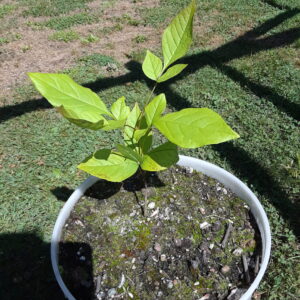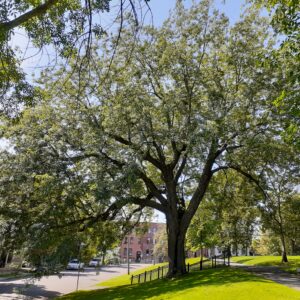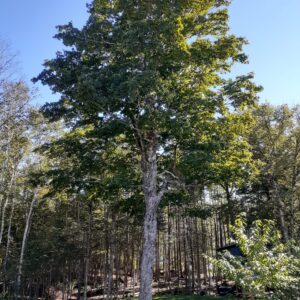Mockernut Hickory
(White Hickory)
Carya Tomentosa
A native of the Midwest and eastern USA. Like all hickory species, it grows slowly and will be better enjoyed by future generations. One of the hardest hardwoods in North America. Like the Shagbark Hickory, the nuts are edible, however, the kernel is rather small due to a thick husk and shell. Typically takes 25 years for production of the edible nuts to begin. Tree parts produce a small amount of the chemical Juglone that inhibit growth of some plants in root zone. The quantity of juglone is significantly less than that of a walnut tree. Hickories have both male and female flowers on same tree and are wind pollinated. Planting two or more trees will improve seed crop quantity through cross pollination. Mast seed crop every 2 to 3 years. Develops a strong taproot that can make it tricky to transplant.
Additional information
| Foliage | Deciduous |
|---|---|
| Locale | Native to North America |
| Height | Medium (30-60ft) |
| Width | Moderate |
| Form | Oval |
| Growth Rate | Slow |
| Longevity | Long (over 100 years) |
| Hardiness Zones * | 4, 5 |
| Sun Exposure | Full Sun (over 6 hrs), Partial Sun (4 to 6 hrs) |
| Soil Preferences * | Moist, Slightly Acidic, Well Draining |
| Soil Tolerances | Dry, Slightly Alkaline |
| Other Tolerances | Occasional Drought |
| Ornamental Interest | Leaves (colour) |
| Wildlife Value | Birds (fruits/seeds), Butterfly Larvae (leaves), Small Mammals (fruits/seeds) |
| Human Value | Carpentry (wood), Fuel (wood) |
| Seed Collection | Ordered Online |
| Planting Considerations | Allelopathic, Intolerant of Full Shade, Intolerant of Soil Compaction, Messy Leaf Litter, Messy Seed Litter, Tricky to Transplant |













